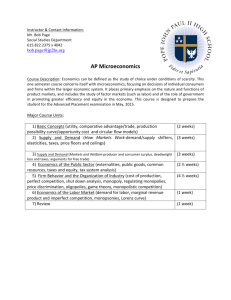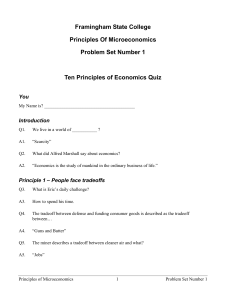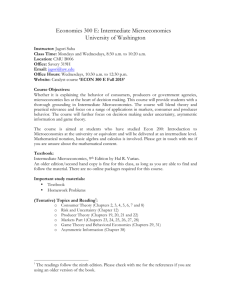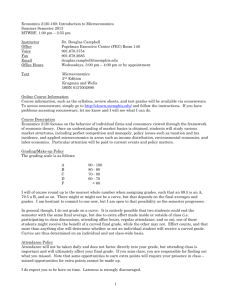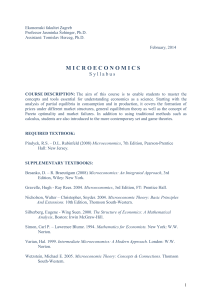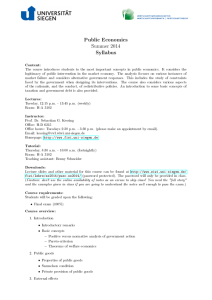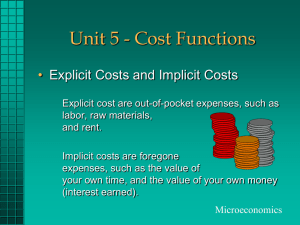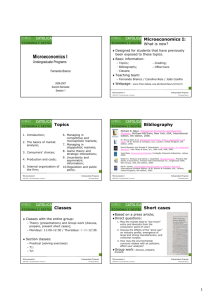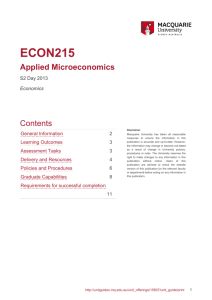1 Management 504: Microeconomics for Managers Fall 2013 Len
advertisement
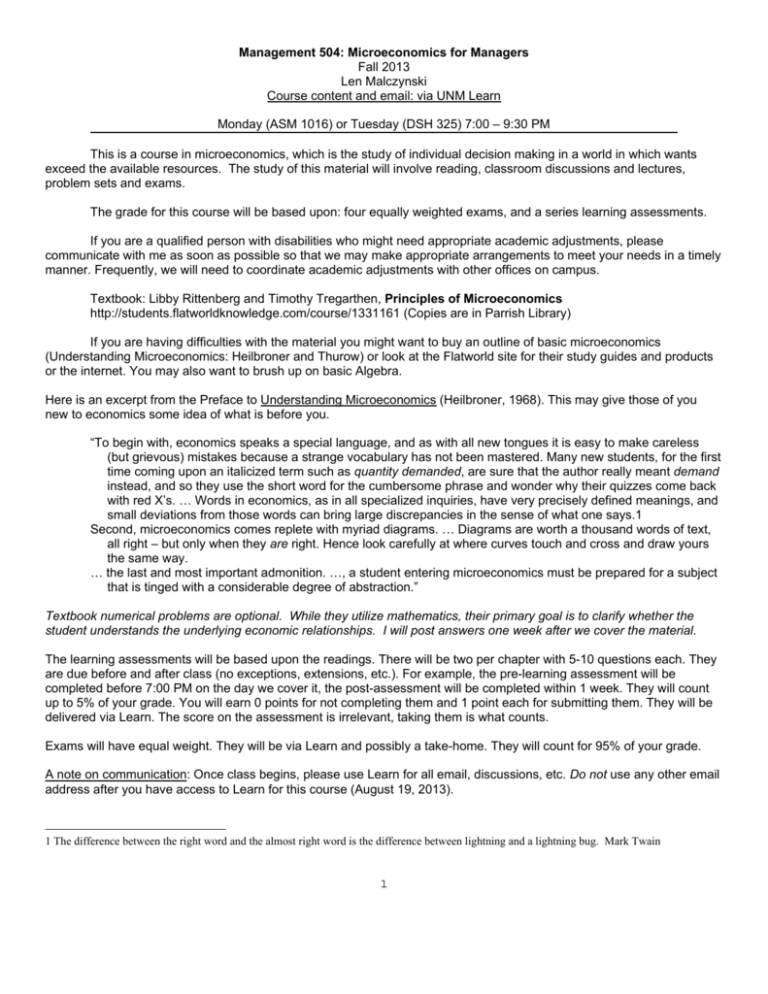
Management 504: Microeconomics for Managers Fall 2013 Len Malczynski Course content and email: via UNM Learn Monday (ASM 1016) or Tuesday (DSH 325) 7:00 – 9:30 PM This is a course in microeconomics, which is the study of individual decision making in a world in which wants exceed the available resources. The study of this material will involve reading, classroom discussions and lectures, problem sets and exams. The grade for this course will be based upon: four equally weighted exams, and a series learning assessments. If you are a qualified person with disabilities who might need appropriate academic adjustments, please communicate with me as soon as possible so that we may make appropriate arrangements to meet your needs in a timely manner. Frequently, we will need to coordinate academic adjustments with other offices on campus. Textbook: Libby Rittenberg and Timothy Tregarthen, Principles of Microeconomics http://students.flatworldknowledge.com/course/1331161 (Copies are in Parrish Library) If you are having difficulties with the material you might want to buy an outline of basic microeconomics (Understanding Microeconomics: Heilbroner and Thurow) or look at the Flatworld site for their study guides and products or the internet. You may also want to brush up on basic Algebra. Here is an excerpt from the Preface to Understanding Microeconomics (Heilbroner, 1968). This may give those of you new to economics some idea of what is before you. “To begin with, economics speaks a special language, and as with all new tongues it is easy to make careless (but grievous) mistakes because a strange vocabulary has not been mastered. Many new students, for the first time coming upon an italicized term such as quantity demanded, are sure that the author really meant demand instead, and so they use the short word for the cumbersome phrase and wonder why their quizzes come back with red X’s. … Words in economics, as in all specialized inquiries, have very precisely defined meanings, and small deviations from those words can bring large discrepancies in the sense of what one says.1 Second, microeconomics comes replete with myriad diagrams. … Diagrams are worth a thousand words of text, all right – but only when they are right. Hence look carefully at where curves touch and cross and draw yours the same way. … the last and most important admonition. …, a student entering microeconomics must be prepared for a subject that is tinged with a considerable degree of abstraction.” Textbook numerical problems are optional. While they utilize mathematics, their primary goal is to clarify whether the student understands the underlying economic relationships. I will post answers one week after we cover the material. The learning assessments will be based upon the readings. There will be two per chapter with 5-10 questions each. They are due before and after class (no exceptions, extensions, etc.). For example, the pre-learning assessment will be completed before 7:00 PM on the day we cover it, the post-assessment will be completed within 1 week. They will count up to 5% of your grade. You will earn 0 points for not completing them and 1 point each for submitting them. They will be delivered via Learn. The score on the assessment is irrelevant, taking them is what counts. Exams will have equal weight. They will be via Learn and possibly a take-home. They will count for 95% of your grade. A note on communication: Once class begins, please use Learn for all email, discussions, etc. Do not use any other email address after you have access to Learn for this course (August 19, 2013). 1 The difference between the right word and the almost right word is the difference between lightning and a lightning bug. Mark Twain 1 Chapter 1 2 3 5 6 7 8 9 10 11 14 18 19 Topic – Tentative Economics: The study of choice Confronting scarcity: Choices in production Demand and Supply Elasticity: A measure of response Markets, maximizers and efficiency The analysis of consumer choice Production and cost Competitive markets for goods and services Monopoly The world of imperfect competition Imperfectly competitive markets for factors of production The economics of the environment Inequality, poverty and discrimination Tentative Class Schedule Week of 8/19/2013 8/26/2013 9/2/2013 9/9/2013 9/16/2013 9/23/2011 9/30/2013 10/7/2013 10/14/2011 10/21/2013 10/28/2013 11/4/2013 11/11/2013 11/18/2013 11/25/2013 12/2/2013 12/9/2013 Chapters to read 1,2, Math appendix 3 NO CLASS 5 6 7 8 9 10 11 12 14 Readings 17 18 19 Final Exam Week Testing Note Holiday Exam 1 Fall Break Exam 2 Exam 3 Understanding growth Thanksgiving Exam 4 2



